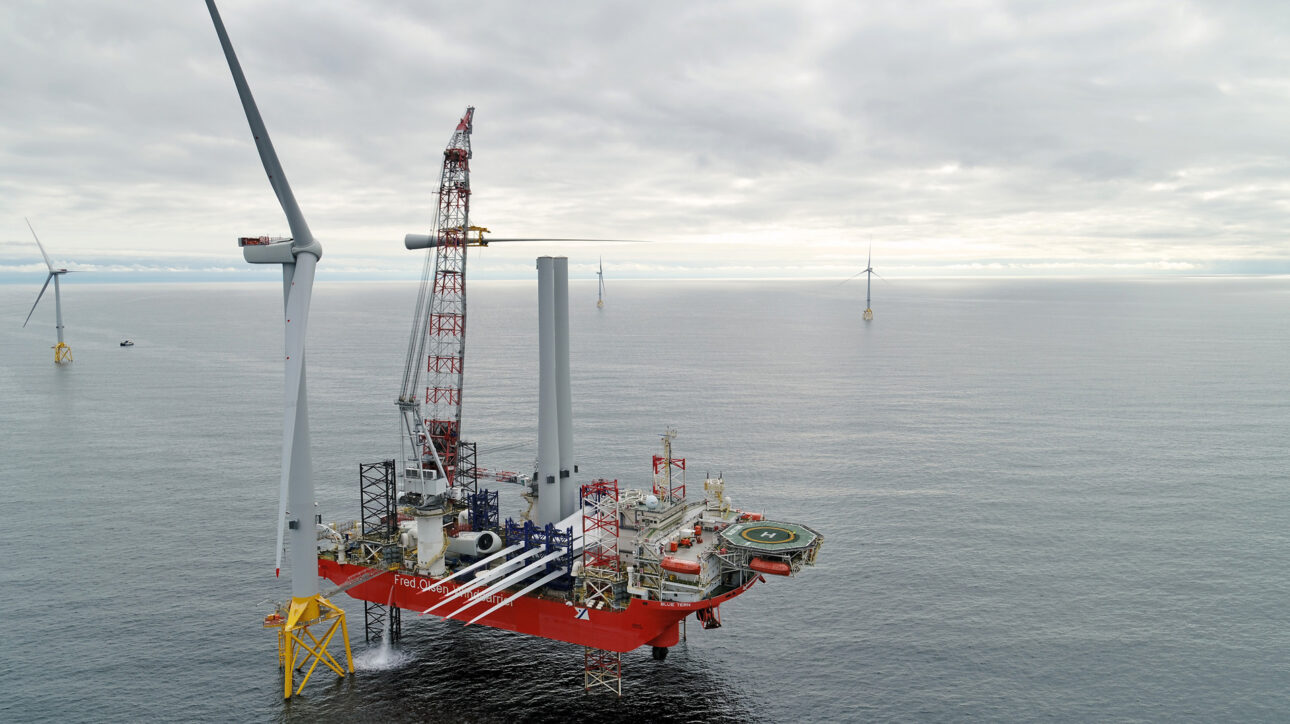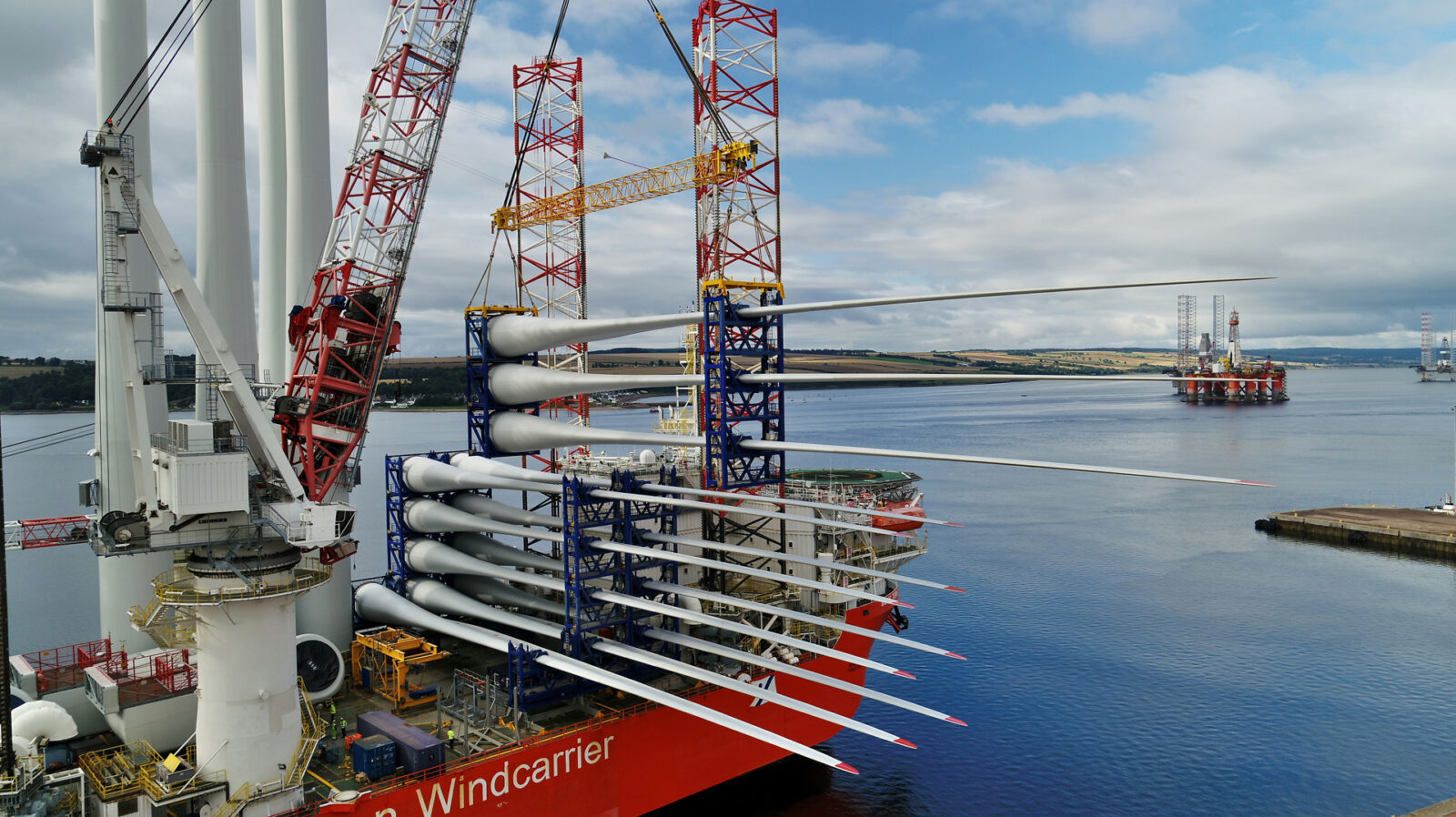With expected capacity of 2 GW, Caledonia will be capable of supplying around two million homes with green, low-cost electricity.
The site was awarded to Ocean Winds under the Scottish Government’s Scotwind process and will join Moray East and Moray West as the company’s third offshore windfarm in the UK.
Need For the Project
The UK already faces tight electricity generation margins, with Government modelling including blackouts in the event of shortage this winter.
In addition, progress towards achieving net zero is increasing demand for green electricity, as households move away from gas and increase electricity consumption. For example, switching to an electric car will see household consumption typically double and switching from gas to electric heating will see it double again.
Since 1990, the UK has set energy prices through market trading. To reverse the high prices which inevitably attend commodity shortage, it is vital we build sufficient new generation capacity to meet our current and future energy requirements.
After a period of intensive technical progress, offshore wind is now the lowest cost means of generating the high volumes of low-carbon power we need – and the Caledonia site is one of the cheapest and fastest to build.
The UK already faces tight electricity generation margins, with Government modelling including blackouts in the event of shortage this winter.
In addition, progress towards achieving net zero is increasing demand for green electricity, as households move away from gas and increase electricity consumption. For example, switching to an electric car will see household consumption typically double and switching from gas to electric heating will see it double again.
Since 1990, the UK has set energy prices through market trading. To reverse the high prices which inevitably attend commodity shortage, it is vital we build sufficient new generation capacity to meet our current and future energy requirements.
After a period of intensive technical progress, offshore wind is now the lowest cost means of generating the high volumes of low-carbon power we need – and the Caledonia site is one of the cheapest and fastest to build.
PROJECT INFORMATION
Caledonia’s Unique Advantages
Engineering advances have opened up more of the UK’s waters to offshore wind development, but the locations where the multiple factors necessary for low-risk, low-cost power production coincide are limited. Caledonia is one such site…
Water Depths
Caledonia’s water depths are 40 to 100 m. Three-quarters of the site is at depths that allow for fixed (rather than floating) foundations.
This means the majority of the site can be built using the same type of jacket foundations which Ocean Winds optimised at Moray East, seeing Caledonia implement a proven, low-risk, low-cost engineering solution.
Distance from Shore
Caledonia is around 40km from shore and 70km from the nearest National Grid connection point. Beyond distances of approx 120km, DC technology becomes a necessity for subsea transmission. This means the additional costs associated with installing AC-DC convertors offshore and DC-AC convertors onshore can be avoided and the onshore substation will be smaller so will require less land and have a lesser impact on the surrounding environment.
Wind
The wind resource at Caledonia is proven through the experience of previous projects and is of a magnitude more usually associated with deeper waters, further from shore. This means Caledonia will benefit from an excellent wind resource, yielding a higher output at lower costs.
Environment
The Moray Firth is the home of commercial-scale offshore wind generation in Scotland. Caledonia neighbours the Moray East, Moray West, and Beatrice sites, and Ocean Winds have had a presence here from the beginning of the area’s offshore wind development.
about ocean winds
We have…
Experience
Experience in developing and successfully consenting large scale offshore wind projects in the Moray Firth – Moray West was consented at record pace – within just 11 months.
Clear understanding
Clear understanding of local concerns associated with the construction and operation of offshore wind farms and experience in developing suitable mitigation measures to address these.
Proven relationships
Over ten years of building strong, comprehensive and trust-worthy relationships with key statutory and non-statutory consenting stakeholders.
Proven Data
A comprehensive bank of data (environmental and technical) that will support the design and environmental assessment of Caledonia.
What’s next?
Caledonia will request a scoping opinion from Marine Scotland Licensing Operations Team through the submission of an Offshore Scoping Report to scope the offshore EIA and the contents of the Environmental Statement.
The Offshore Scoping Report will be submitted in September 2022.
An Onshore Scoping Report will follow with a scoping opinion again sought for the onshore elements of the project through Aberdeenshire Council. It is anticipated that the Onshore Scoping Report will be submitted in November 2022.
These reports will outline our proposals – the installation of a 2GW site which will be operational by 2030.
If you would like to be notified when these documents are published, please sign up to our mailing list.
Caledonia will request a scoping opinion from Marine Scotland Licensing Operations Team through the submission of an Offshore Scoping Report to scope the offshore EIA and the contents of the Environmental Statement.
The Offshore Scoping Report will be submitted in September 2022.
An Onshore Scoping Report will follow with a scoping opinion again sought for the onshore elements of the project through Aberdeenshire Council. It is anticipated that the Onshore Scoping Report will be submitted in November 2022.
These reports will outline our proposals – the installation of a 2GW site which will be operational by 2030.
If you would like to be notified when these documents are published, please sign up to our mailing list.


